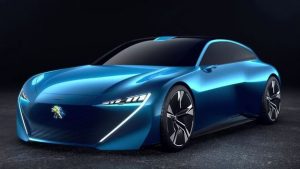
Credit: © sdecoret – Fotolia.com
Just recently, we summarized the findings of
Goldman Sachs’ on the Internet-of-Things (IoT) report, and what they think where IoT might lead us to in the future.
Now, another report from Schneider Electric called “IoT 2020 Business Report” delivers some new findings on how large organisations will leverage Internet of Things technologies as a serious business tool by 2020. Their study is based on feedback by 3,000 business leaders from twelve countries.
According to their global survey, 75% of respondents were optimistic about the opportunities IoT presents this year. Almost every second out of three (63%) companies use IoT to improve their customer experience and analyze customer behaviour in 2016. They hope to solve problems faster, achieve better customer service and customer satisfaction ranking.
Furthermore, cost savings in automation seem to be high on the agenda, above all building (63%) and industrial automation (62%). As results showed the improvements in automation technologies almost half of the companies (42%) say they want to implement IoT-enabled building automation systems within the next two years.
The key driver for IoT is mobile for two out of three companies (67%). Thus, they plan to implement IoT via mobile applications this year, and 32% even in the next six months. Again, cost savings of up to 59% is the major driver for IoT implementation.
The confidence is the value of knowledge gathering and sharing already exists inside most companies surveyed. 81% feel that the data and/or information generated by the IoT is being shared effectively throughout the organisation. Fears are lower than expected. Only 41% of respondents connect cybersecurity threats with IoT business challenges.
“We’re past the point of questioning whether IoT will deliver value. Businesses now need to make informed decisions to position themselves to maximise IoT’s value in their organisation.” Dr. Prith Banerjee, Chief Technology Officer, Schneider Electric
However, Schneider Electric does not only publish numbers of their study but also provides the following predictions that business leaders might take into consideration.
1. The next wave of digital transformation.
IoT will bring operational technology (OT) and IT together while fueling a mobile and digitally enabled workforce: As more companies both expand and deepen their digitisation programmes enterprise-wide, IoT will increasingly take centre stage. This new wave of transformation will be enabled by more affordable “connected” sensors, embedded intelligence and control, faster and more ubiquitous communications networks, cloud infrastructure, and advanced data-analytics capabilities.
2. Insightful data.
IoT will translate previously untapped data into insights that enable enterprises to take the customer experience to the next level: When thinking about the value proposition of IoT, most businesses point to efficiency and cost savings as the key benefits. Yet access to data – including previously untapped data – and the ability to translate it into actionable insights, the hallmark of IoT, will deliver greater customer-service transformation and new opportunities to build brand/service loyalty and satisfaction.
3. Premise-to-cloud confidence.
The IoT will promote an open, interoperable and hybrid computing approach, and it will foster industry and government collaboration on global architecture standards that address cybersecurity concerns: While cloud-based IoT solutions will grow in popularity, no single computing architecture will monopolise their delivery. IoT instead will flourish across systems, both at the edge and on premise, as part of private cloud or public cloud offerings. Making IoT available across heterogeneous computing environments will help end users adopt IoT solutions in the way that best suits their security and mission-critical needs while also offering entities with legacy technology infrastructures a logical and manageable path forward, allowing them to transform over time.
4. Innovations that leapfrog existing infrastructure.
IoT will function as a source of innovation, business model disruption and economic growth for businesses, governments and emerging economies: Just as the Industrial Revolution, birth of the Internet and mobile revolution have driven advancement, innovation and prosperity, so will IoT. Businesses and cities alike will deliver new IoT-enabled services; new business models will emerge; and, in particular emerging economies will have a significant opportunity to quickly leverage IoT without the constraint of legacy infrastructure, essentially leapfrogging old ways. In fact, McKinsey forecasts that 40 percent of the worldwide market for IoT solutions will be generated by developing countries.
5. A better planet.
IoT solutions will be leveraged to address major societal and environmental issues: IoT will help countries and their economies respond to the biggest challenges facing our planet, including global warming, water scarcity and pollution. In fact, survey respondents identified improved resource utilisation as the number one benefit of IoT to society as a whole. In concert with the private sector, local and national governments will embrace IoT to accelerate and optimise current initiatives to curtail greenhouse gas emissions in accord with the breakthrough COP21 climate agreement, whereby 196 countries pledged to keep global warming under the threshold of two degrees celsius.
Spot On!
The Internet of Things has been seen as the main revolution from a technology perspective. The hype seems to be at an all-time high. Real business value is not only saving money though. Customer service improvements, better process optimization and smarter work and life opportunities will have big potential to bring IoT business value to enterprises in the future.
What is your experience on the value of IoT for your business?






